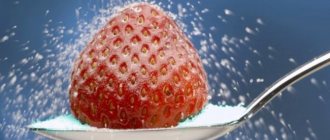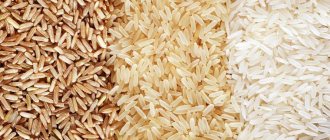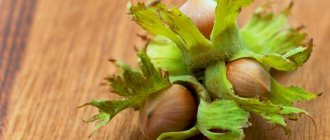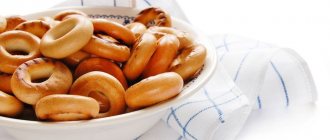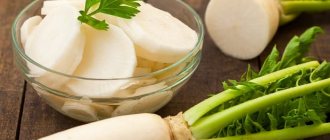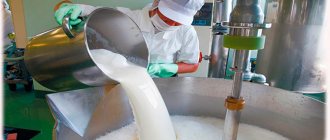The calorie content of sugar, regardless of its type, is approximately 4 kilocalories per 1 g - and all these calories come from fast carbohydrates with the maximum rate of absorption. In turn, a teaspoon of sugar contains approximately 20 kcal.
Despite the fact that any sugar (both white and brown) has the same calorie content, the glycemic index - and, therefore, the effect on the body - is different. In addition, many drinks, cookies and other sweets do not use sugar at all, but fructose syrup - its calories have a different effect on the body.
What types of sugar are there?
Sugar comes in different types
A large number of different types of sugar are produced. The most common types: cane and beet.
Depending on the type of raw material, sugar is:
- reed;
- beet;
- maple;
- palm;
- sorghum
Cane sugar is considered the most ancient. It is obtained from the stalks of sugar cane. For the first time it began to be produced in India.
Beet sugar is made from the fruits of sugar beets.
Maple sugar is made from the sugar maple tree. This kind of sugar was first produced in Canada, and to this day the largest amount of it is produced there.
Palm sugar is extracted in Asian countries from the flower heads of various palm trees.
Sorghum sugar is extracted from the stems of sweet sorghum plants. This species was mined in ancient China and later became widespread in the USA.
Fructose or sugar - which is better?
If you choose between sugar and pure fructose, then an equal combination is better. Moreover, it is better to obtain pure fructose directly from fresh fruits.
If you decide to get fructose from a jar (or box), then know: the most ordinary white refined sugar consists of approximately 50% fructose. Is the game worth the candle?
Of course, fructose is not as demanding on insulin as sugar, but it can nevertheless cause obesity and heart problems. So if you do not have diabetes, then it is better not to experiment. After all, the daily intake of fructose for an adult is only about 30 grams, and an overdose is always fatal...
Energy and nutritional value
Calorie content of 100 g of sugar 399 kcal
Sugar is the main supplier of carbohydrates to the body, which are necessary for normal human life. Granulated sugar is based on sucrose. The product contains 99.8% carbohydrates.
Small amounts of other elements are present: iron 0.03 mg, potassium 3 mg, sodium 1 mg, calcium 3 mg. The value of sugar lies in the fact that when it enters the human body, it easily breaks down into glucose and fructose.
100 g of granulated sugar contains about 399 kcal. 1 glass of sugar contains 798 kcal.
Sugar is necessary for the production of carbohydrates in the human body.
Calorie content of sugar
Granulated sugar calorie content, which you need to know in order to create the right menu. We present the data that we can most often use in everyday life. These figures are based on white sugar.
Brown sugar: how to spot a fake?
There is an opinion (unfortunately, true) that natural unrefined sugar is extremely rare on the domestic market. Usually, “colored” refined sugar is sold instead. At the same time, some are convinced: it is impossible to distinguish a fake!
And the saddest thing is that they are partly right, because directly in the store it is impossible to distinguish unrefined sugar from tinted refined sugar.
But you can check the naturalness of the product at home! To do this you need to know that:
- Crystals of unrefined sugar are not just covered with molasses, they are literally “impregnated” with it. Therefore, if, when you put brown sugar in warm water, you get tinted water and white crystals at the bottom, then you bought a fake. If the water has changed color, but the crystals have retained their original color, then the sugar is natural.
- Natural unrefined sugar has a magical taste and aroma that is in no way similar to the smell of burnt sugar, which is often used to color white sugar. On the other hand, if refined sugar was soaked in molasses and not in burnt sugar, then you might not be able to tell...
Well, the most correct way to determine the naturalness of unrefined sugar is the following algorithm of actions: find a obviously natural product and eat a whole pack, after which you can identify any fake sugar in the blink of an eye (by smell and taste).
It is better to buy real unrefined sugar directly from the country where it is produced. Therefore, if possible, ask your friends, relatives and acquaintances to bring you a pack or two of natural brown sugar “straight from the plantation.”
The benefits and harms of sugar
Do not exceed the amount of sugar, it will harm your health
Scientists are constantly conducting research to find out what the effect of sugar is on the body. Sugar is good and bad. If a person regularly exceeds the norm for consuming sugar, this worsens his health.
Harmful effects of sugar on the body:
- Promotes the deposition of fatty tissue. Sugar is a high-calorie product, so any abuse leads to obesity.
- Addictive.
- Helps to create a feeling of false hunger.
- Reduces skin elasticity, which leads to the appearance of wrinkles.
- Negatively affects the activity of the cardiovascular system.
- Lashes out calcium.
- Removes B vitamins.
- Reduces immunity.
- Negatively affects the nervous system.
- May lead to diabetes.
- Destroys tooth enamel.
Harm of sugar to the body
Useful properties of sugar:
- Provides the body with calories.
- Prevents the formation of blood clots.
- Good prevention of arthritis.
- Necessary for the functioning of the liver and spleen.
Sugar is necessary for human life, but you should not exceed the norm of its consumption so as not to worsen your health.
Experts believe that a person needs 60 g of sugar per day. Excess has a negative impact on health. The daily norm is equal to 15 pieces of refined sugar, if converted into spoons, it will be equal to 12 spoons. Don't forget that foods and drinks contain large amounts of sugar. For example, one glass of any sweet carbonated drink contains 30 g of sugar.
Modern people, for the most part, consume much more sugar than they need. For example, in the USA the average is 190. In Russia, the average person consumes about 100 g per day in pure form. In both cases, the norm for sugar consumption is exceeded.
Sugar intake per day
In scientific circles, it is generally accepted that the daily sugar requirement for most healthy adults is about 50 grams (10 teaspoons). However, with each “revision” of this problem, the norm decreases. Because refined white sugar, like unrefined brown sugar, is simply not needed by our body.
Meanwhile, at first glance it may seem that the daily norm is quite “roomy”, because when drinking 1-2 cups of tea or coffee, we eat a maximum of 5-6 teaspoons of sugar. However, there are two pitfalls here:
1. Nowadays, refined sugar is added to almost all multi-ingredient food products produced industrially.
2. The rate of sugar consumption per day takes into account not only sugar crystals, but also any other simple sugars (fructose from fruits, lactose from milk, glucose from honey, maltose from beer and bread, etc.)
Therefore, ideally, refined sugar (useless carbohydrates without minerals and vitamins) should be excluded from the diet entirely.
However, we understand that modern reality is far from ideal: sweet pastries, buns, ketchup, chocolate and other products containing refined sugar are extremely difficult for most of us to refuse. This means that we must try to significantly limit or even eliminate explicit sugar, that is, do not add it to tea, cottage cheese, eggnog, pancakes, etc.
And the rest is up to the best of our abilities...
About calories per spoon of cane variety
The nutritional value of cane sugar is slightly less than standard white sugar, so the following calorie indicators are distinguished here:
- a tablespoon contains only 20 g and 75 calories,
- teaspoon – this is from 20 to 30 kcal of cane sugar,
- the reduced amount of calories lies in the composition - there are more minerals, so it is better to give preference to the cane variety rather than the white one.
You should not use cane sugar in excessive quantities, thinking about possible weight loss.
Sweeteners
Sweeteners are of synthetic and natural origin. The former do not carry any energy value and are not absorbed by the body at all. At the same time, there are studies that prove they are harmful to the body. The latter can have different calorie content, their main feature is that they take a long time to digest, thereby not provoking a rapid jump in insulin in the blood after consumption. The exception is stevia and powder, being sweeteners of natural origin, they are absolutely non-caloric and are not absorbed by the body. Almost all sweeteners are much sweeter than sugar and are used in smaller doses.
There are a lot of artificial sugar substitutes, their range is increasing every day. The composition and dosage can be read on the product label. Most often they come in the form of tablets and are conveniently packaged. Most popular:
- Sucralose is extracted from regular sugar and is considered the safest of all alternative sweeteners. Its glycemic level is 0, it does not affect the level of insulin in the blood, it is 600 times sweeter than sugar and has no calories.
- Aspartame is 160-200 times sweeter than sugar, energy value is 40 calories per 100 grams, it is not recommended for use in cooking when long-term heat treatment is used.
- Saccharin is approximately 400 times sweeter than sugar and contains 20 calories per 100 grams of product. Several decades ago, there was a popular theory about the dangers of this product, which was refuted by progressive research.
Natural sweeteners are also available in a wide range, the main ones being:
- Fructose is a product extracted from fruits. It is 2 times sweeter than sugar, the glycemic index is 20, 100 grams of the product contains 35 calories, which is almost the same as sugar, but since less is needed, this affects the energy value of dishes or drinks.
- Sorbitol is extracted mainly from rowan berries, apples and apricots. Sugar is 2 times sweeter, but being an alcohol in its structure, it does not affect insulin in the blood. Calorie content 100 grams - 24 calories.
- Erythritol - extracted from melons. Low in calories, does not affect insulin levels in the blood, less sweet than sugar. To replace 10 grams of sugar, you need 7 grams of erythritol.
- Stevia - obtained from the leaves of the stevia plant. 200 times sweeter than sugar, contains no calories. It has a specific bitter-copper taste. Whole stevia leaves are also used in drinks.
Other measuring containers
Using the same formula, you can determine the weight of a sweet product in a glass. Typically glasses have a volume of 200 or 250 ml:
- 200 * 0.85 = 170 g;
- 250 * 0.85 = 212 g.
Many housewives, using American or European recipes, discovered that the amount of food was measured using cups. What is their volume? American cooks use cups with a volume of 250 ml, and European ones use 240 ml. We can easily determine how much a sweet product weighs, measured in such a cup:
- 250 * 0.85 = 212 g;
- 240 * 0.85 = 204 g.
The same question arises in the process of cooking in a slow cooker. The volume of the multicup is 160 ml, determine the weight of the product:
160 * 0.85 = 136 g.
Now you can easily measure the required amount of products.
Table of food measures in spoons
Properties of cane sugar
How many grams are in a tablespoon of boiled buckwheat?
what is its calorie content? how much does 50 grams weigh when boiled? Nutritional value and composition | Vitamins | Minerals
How much does cane sugar cost (average price per 1 kg)?
Moscow and Moscow region.
221 rub.
Nowadays, you can increasingly see brown cane sugar in almost all supermarkets and cafes. However, not many people know how it differs from the usual white, and most importantly, whether this product is healthy or not.
Cane sugar is unrefined sugar, which is obtained by boiling cane sugar syrup using a special technology. It is an excellent sweetener and is often used as an additive in various drinks: coffee, cocoa, tea, chocolate, liqueurs, fruit and berry juices, and various drinks. The taste and aroma of these liquids intensifies and, one might say, transforms, acquiring more intense notes. In cooking, cane sugar is used as a sweet additive in the production of dairy products, some salads, confectionery and bakery products: sweets, creams, glazes, ice cream and many others. After all, any dessert without sugar is not a dessert at all.
The calorie content of cane sugar is not much different from its white “brother” and is 377 kcal per 100 grams. This spice can also be used to prepare dishes from turnips, carrots, stews, carbonates and sauces. The unique properties of cane sugar are also appreciated in Sweden, where culinary geniuses add it to liver pate and pickled herring.
By the way, it is important to be able to distinguish true brown cane sugar from fake. This is due to the fact that some enterprising manufacturers pass off regular caramel-colored sugar as a more expensive product.
One way to determine real sugar is as follows: throw some sugar into warm water. If it turns golden, you bought regular tinted sweetener. If the color has not changed, you are lucky: you have truly real cane sugar.
Classification of carbohydrates
Let's start with the easiest thing: carbohydrates can be simple and complex. The former are divided into monosaccharides and disaccharides. Most often, these carbohydrates are found in vegetables, fruits and milk. They are simple in structure and easily absorbed by humans. In critical situations, this plays into the hands of the victim (for example, with fatally low blood sugar levels), or helps the sick body find easy access to calories. For example, operated patients are prescribed drips with glucose to replenish the energy “balance”.
Complex carbohydrates are divided into starch and dietary fiber. Starch provides the body with constant and slow energy, like a “battery” for the day. Dietary fiber improves intestinal microflora and helps remove “garbage” naturally. Complex carbohydrates are found in grains and vegetables. In this way, the body can receive the energy it needs at a given time.
How many calories are in refined sugar 1 piece
How many calories are in 1 (one) spoon, piece, (one) cube of sugar? “We all remember when artificial sugar substitutes appeared in our reality. There was no limit to the happiness of losing weight and sick people - because now you can combine business with pleasure. Diet Coke is simply heaven, because now it shouldn’t cause as much harm as regular Coke (minus seventy-five calories). If you replace all portions of sugar with miracle tablets throughout the day, you will end up with ten tablets a day instead of ten spoons of sugar, isn’t this a miracle? In total, this is minus two hundred calories to your daily diet.
How many grams in a teaspoon
Cooking is a space for a variety of experiments. You can prepare completely different dishes just by slightly changing the recipe.
The easiest way to find out the exact weight of any product is to measure it using high-precision electronic scales. However, these are not always at hand, and weighing takes time. The way out of the situation is to measure using available means. People calculate weight in glasses, teaspoons and tablespoons.
Table
| Products | Product weight in grams, without slide | Weight of products in grams, with a slide |
| Buckwheat | 7 | 10 |
| Dry mustard | 4 | 7 |
| Dry yeast | 5 | 8 |
| Gelatin | 5 | 8 |
| Raisin | 7 | 10 |
| Cocoa powder | 9 | 12 |
| Starch | 6 | 9 |
| Ground cinnamon | 8 | 12 |
| Ground coffee | 7 | 9 |
| Instant coffee | 4 | 5 |
| Cereals (barley, pearl barley) | 8 | 11 |
| Cornflakes | 2 | 4 |
| Lemon acid | 5 | 8 |
| Poppy | 8 | 12 |
| Semolina | 8 | 12 |
| Potassium permangantsovka | 15 | 18 |
| Powdered milk | 12 | 14 |
| Flour | 9 | 12 |
| Cereals | 6 | 8 |
| Nuts | 10 | 13 |
| Ground pepper | 5 | 8 |
| Baking powder | 5 | 8 |
| Rice | 5 | 8 |
| Sugar (and its powder) | 10 | 12 |
| Soda | 7 | 10 |
| Rock salt | 8 | 12 |
| Extra salt | 7 | 10 |
| Sorbitol | 5 | 7 |
| Ground crackers | 5 | 7 |
| Dry cream | 5 | 6 |
| Dry mashed potatoes | 10 | 12 |
| Medicinal herb | 2 | 3 |
| Beans | 10 | 12 |
| Lentils | 7 | 9 |
| Egg powder | 10 | 12 |
Glucose and sucrose: similarities and differences
There are many similarities between these substances:
- white powder;
- has no smell;
- tastes sweet;
- dissolves well in water;
- both substances are carbohydrates;
- both substances are obtained from natural raw materials;
- are the main source of energy in the body;
- allowed for consumption only in limited quantities;
- in some cases (for example, severe diabetes) are completely contraindicated.
There are also differences:
- glucose is part of sucrose (they have different chemical compositions);
- sucrose is 2 times sweeter than glucose;
- glucose is a monosaccharide, and sucrose is a disaccharide;
- sucrose breaks down in the body, but glucose does not;
- sucrose is much easier to produce, which is why it is sold in the form of a common food product - sugar;
- Glucose is more beneficial than sucrose (explains why below)
- Glucose is used for medical purposes, but sucrose is not.




